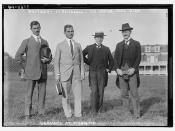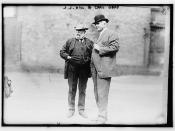In April, Monica Carrolls, Operations Supervisor of ABC, Inc. hired a new campus recruiter named Carl Robins. Carl was experienced with the recruiter training; he had successfully hired and recruited several people prior to his six-month employment with ABC, Inc. This new job was his first recruitment effort of setting up his personal orientation training.
Monica Carrolls, the CEO, scheduled a new hire orientation for the 15 new hires for June the 15th. All new hires were expected to be on the job and working by July 15th. She contacted Carl and provided him with all the training issues involved in the recruitment process. These issues included the training schedules, orientation, manuals, policy booklets, physicals, and drug tests. All these procedures were necessary in coordinating the new hires. Carl noted his supervisor instructions but failed to inquire whether assistance would be provided to help him set up the training for the 15 new recruits.
Carl was confronted with setting up the training orientation without any indications of assistance from his organization. According to Charles Cadwell (1988), consultant and author of, The New Employee Orientation: A Practical Guide for Supervisors. Orientations require guidelines, which present such core values as teamwork, communication, creativity, diversity, learning, trust, and quality. All organization needs to store these ideas into the employees daily work life. These are the steps to an effective orientation recommended by Cadwell (1988). Employee orientation begins the moment you hire someone and goes beyond the trial introduction. According to Cadwell, it can take up to a year for the employee to be fully integrated into the company. He offers these five objectives for orientation:(1) Make the person feel welcome. "One thing I always notice is that when an employee leaves there's a party, but when they arrive there isn't," says Caldwell. Why...


